Imagine stepping into a tranquil space where the gentle crunch of gravel underfoot calms your mind. Japanese Zen gardens are very special places designed for reflection and peace. They have beautiful elements that help us be mindful and feel happy.
Do you want to make your outdoor area a peaceful haven? You can use raked sand patterns, serene water features, and other cool elements to create harmony.
Let’s explore 17 inspiring Japanese Zen garden ideas to turn your vision into reality.
Embrace Minimalism With Gravel Paths
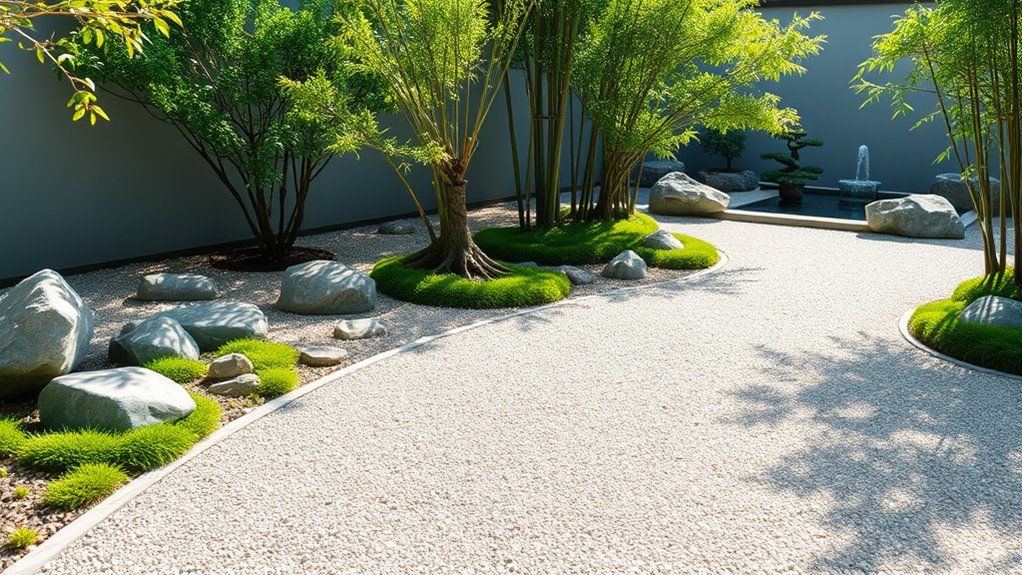
Embracing minimalism in a Japanese Zen garden often involves the strategic use of gravel paths. These pathways serve both aesthetic and functional purposes, guiding visitors through the serene landscape while allowing for easy maintenance. The sound of gravel crunching underfoot complements the tranquil atmosphere, encouraging mindfulness and contemplation. Incorporating varying shades and textures of gravel can enhance visual interest, creating a harmonious balance with surrounding elements like stones, plants, and water features.
Create Serenity With Raked Sand Patterns
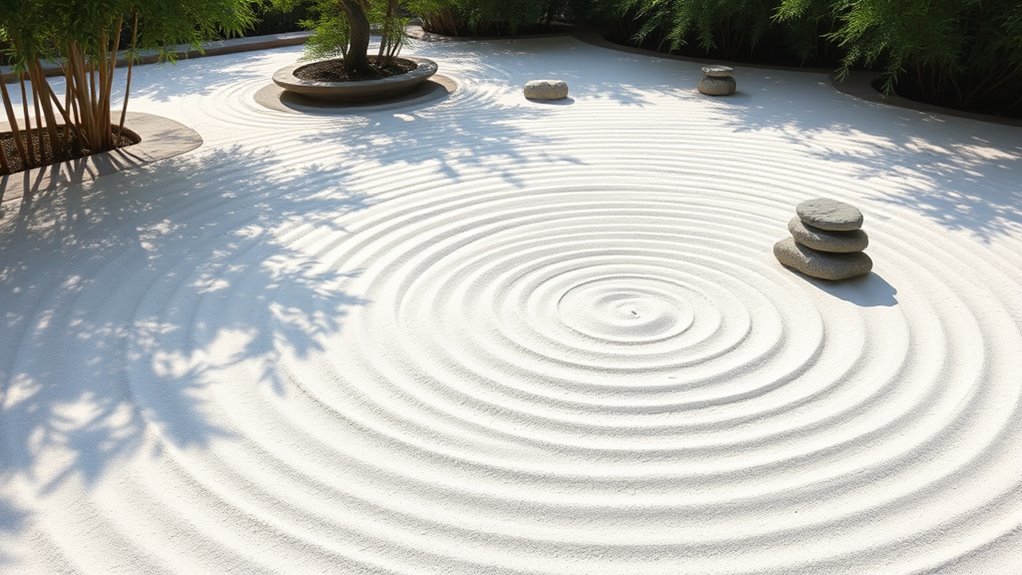
Creating serenity in your Zen garden can be beautifully achieved through raked sand patterns. The act of raking sand not only serves as a meditative practice but also symbolizes water ripples, evoking a sense of calm and tranquility. Intricate designs, from gentle arcs to swirling spirals, can enhance the aesthetic appeal while promoting mindfulness. Experimenting with patterns allows for personal expression, making each garden unique, and reinforcing the connection to nature and inner peace.
Incorporate Water Features for Tranquility
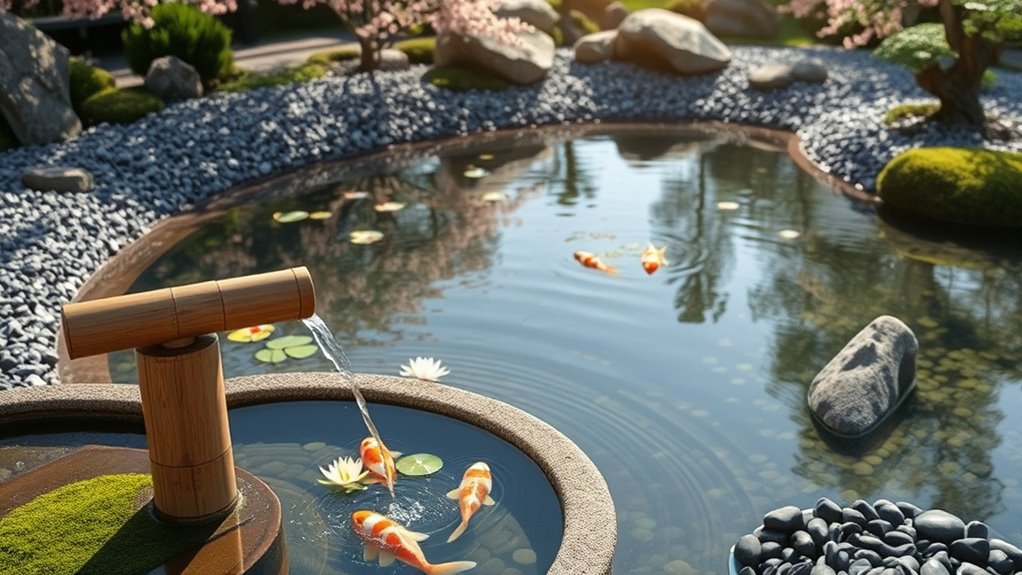
Incorporating water features into your Japanese Zen garden can greatly enhance its tranquility and aesthetic appeal. Options such as koi ponds, meandering streams, or simple bamboo water spouts create soothing sounds and provide a reflective surface that encourages mindfulness. Water not only attracts wildlife but also symbolizes purity and renewal in Zen philosophy. By integrating these elements, you can cultivate a serene atmosphere that invites relaxation and contemplation in your garden space.
Use Rocks and Stones to Symbolize Mountains
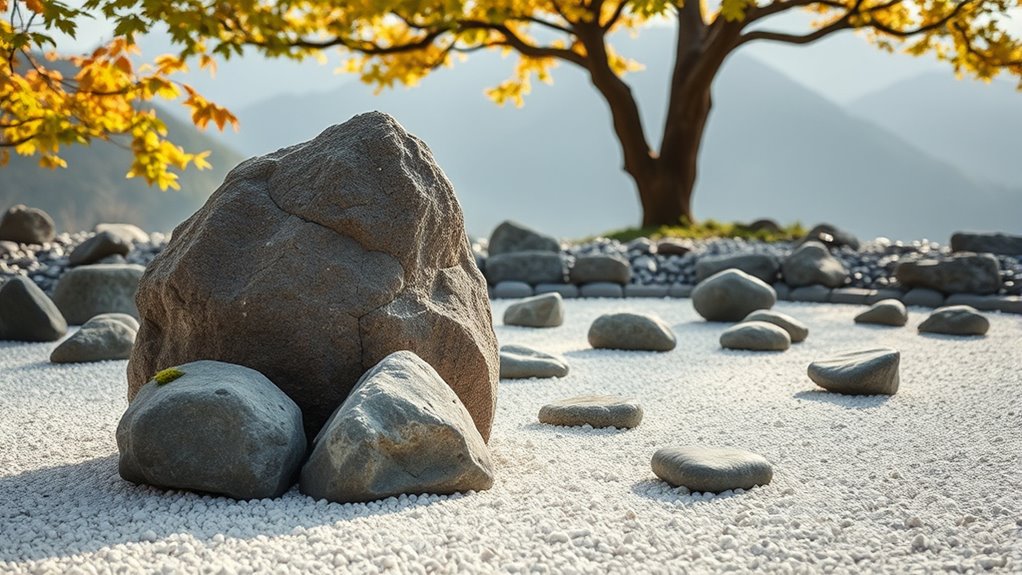
In Japanese Zen gardens, rocks and stones are artfully arranged to symbolize mountains and natural landscapes. By carefully selecting different sizes and shapes, you can create a sense of depth and elevation. Larger stones represent towering mountains, while smaller ones can symbolize hills or valleys. This arrangement not only enhances the aesthetic appeal of the garden but also fosters a sense of tranquility, connecting the viewer to nature and promoting meditative reflection.
Add Lush Greenery With Bonsai Trees
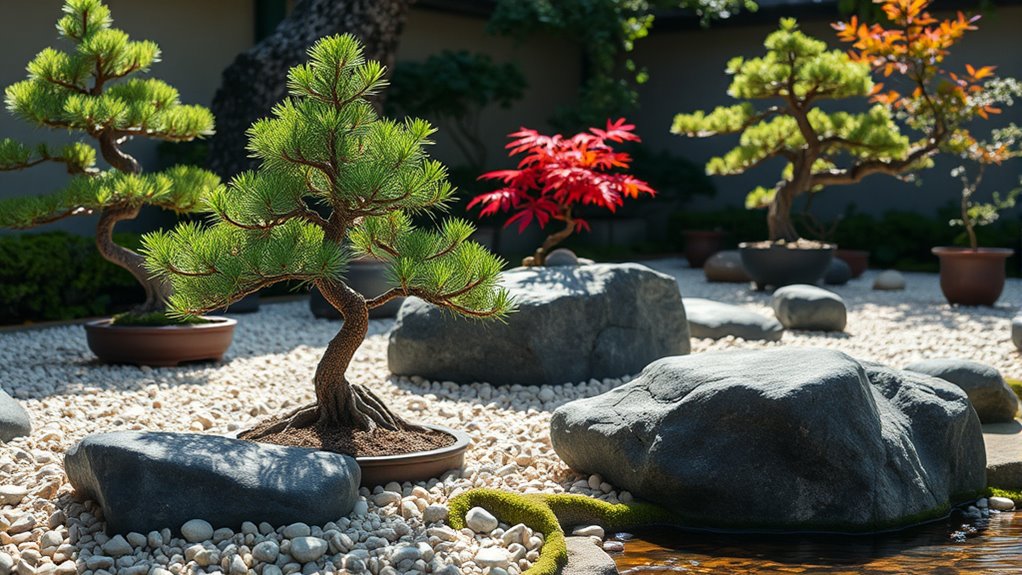
Bonsai trees are a perfect addition to a Japanese Zen garden, providing a touch of greenery that enhances the serene ambiance. Their intricate shapes and miniature size embody the art of patience and perfection, reflecting the principles of Zen philosophy. Positioning bonsai trees thoughtfully amongst rocks and gravel can create focal points, inviting contemplation. Choose a variety of species, such as juniper or maple, to highlight different textures and seasonal colors, enriching the harmony of your garden.
Design a Meditation Area for Peaceful Reflection
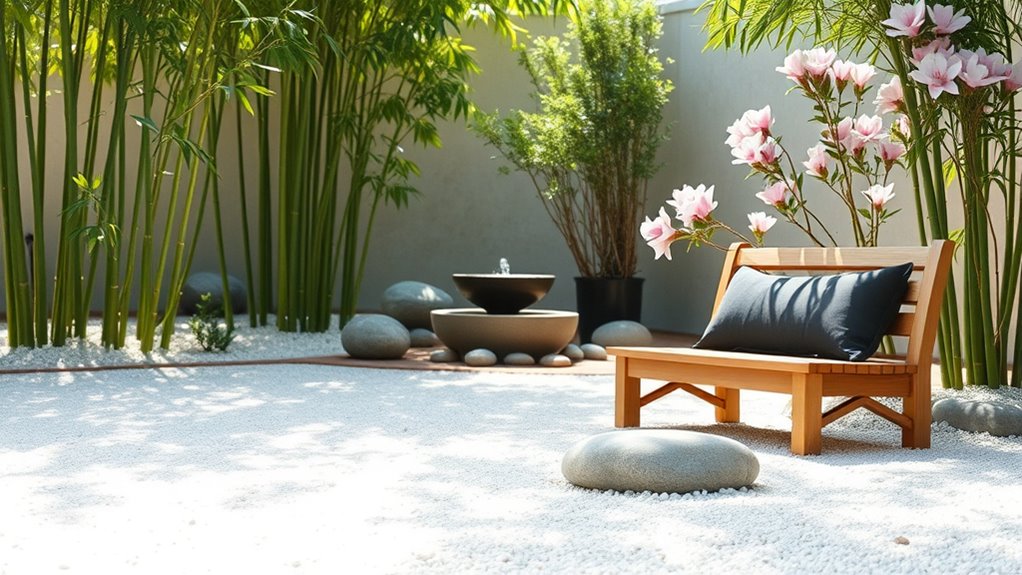
Creating a meditation area in your Zen garden enhances tranquility and promotes peaceful reflection. Begin by selecting a quiet corner, bordered by soft, raked gravel and smooth stones. Incorporate a simple wooden bench or a flat cushion for seating, surrounded by carefully placed plants such as bamboo or azaleas. Adding a small water feature, like a fountain, can further enhance the soothing atmosphere, encouraging mindfulness and relaxation during meditation sessions.
Utilize Asian Lanterns for Soft Lighting
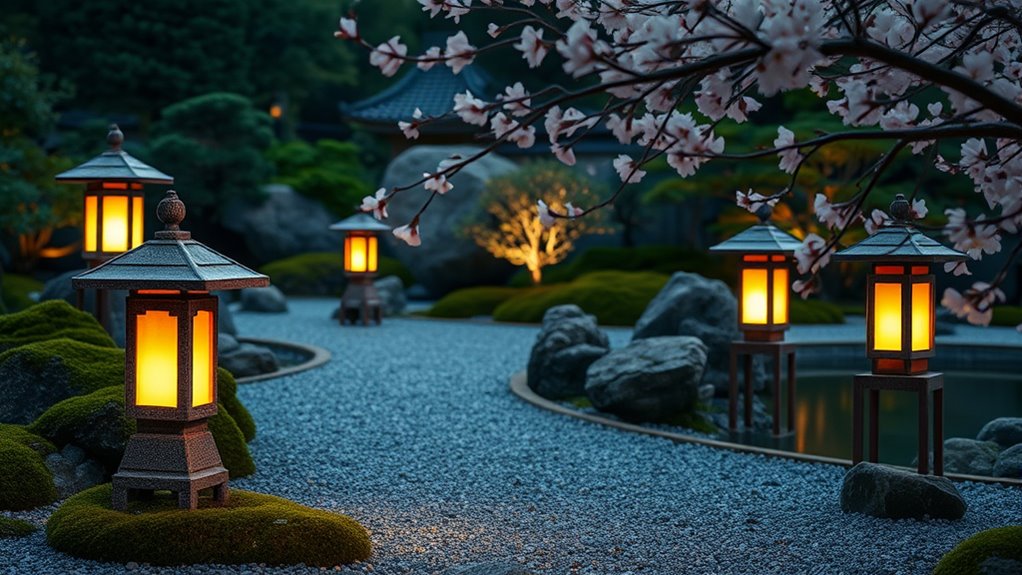
Utilizing Asian lanterns in your Japanese Zen garden can create a magical ambiance during the evening hours. These lanterns, often made of stone, wood, or paper, emit a soft, inviting glow that complements the tranquil atmosphere of the garden. Placing them along pathways or near water features enhances the serenity, guiding the eye and inviting contemplation. Whether lit by candles or electric lights, Asian lanterns beautifully accentuate the minimalist aesthetic, making your garden a peaceful retreat.
Integrate Bamboo Fencing for Natural Borders
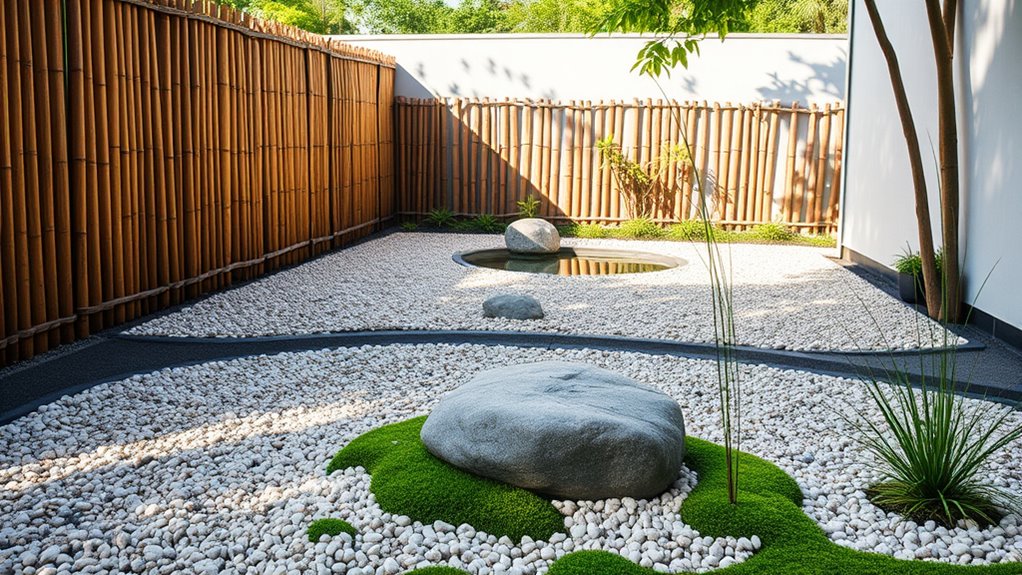
Integrating bamboo fencing into your Zen garden can create natural borders that enhance the serene atmosphere. Bamboo, with its organic texture and earthy tones, complements the minimalist aesthetic of Zen design while providing a sense of enclosure and privacy. Use the fencing to delineate different sections of your garden, or to frame key features such as rocks, water elements, or plantings. This harmonious addition not only strengthens the garden’s tranquility but also evokes a deeper connection to nature.
Experiment With Asymmetrical Layouts
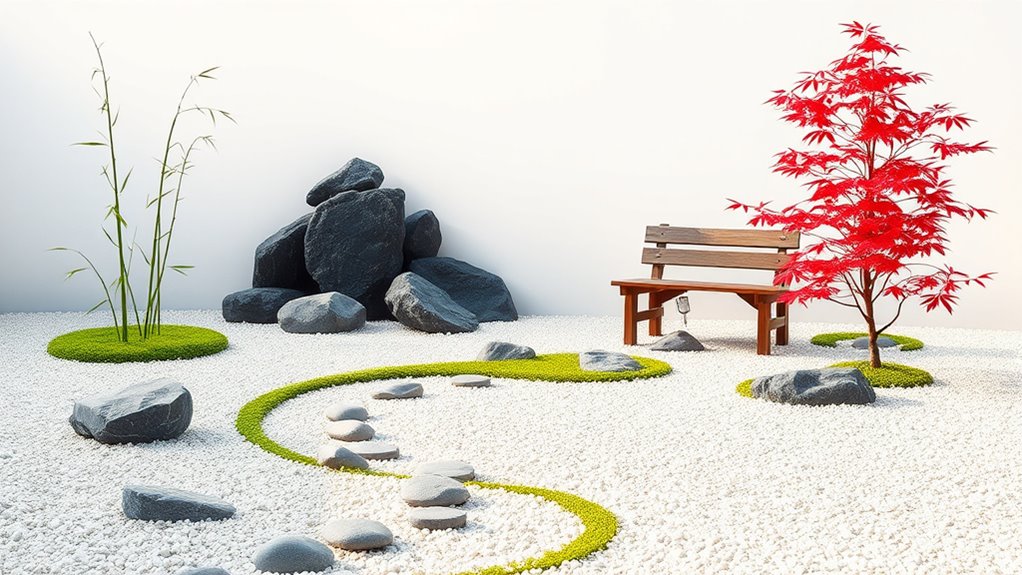
Experimenting with asymmetrical layouts in your Japanese Zen garden can create a dynamic and visually interesting space. By placing elements such as rocks, plants, and bamboo in an unbalanced arrangement, you cultivate a sense of natural beauty and spontaneity. This approach gives the garden a relaxed, organic feel while encouraging contemplation. Consider varying the size and color of materials, while ensuring there’s a harmonious flow, inviting the observer to engage with different perspectives as they move through the garden.
Include a Zen Sand Garden for Quiet Moments

A Zen sand garden, also known as a dry landscape garden or karesansui, invites tranquility and contemplation. By raking smooth sand into patterns that mimic rippling water, it creates a serene atmosphere for quiet moments of reflection. Minimalist in design, these gardens often include carefully placed rocks and gravel to symbolize mountains and rivers. This space encourages mindfulness and serves as a beautiful focal point, providing a perfect retreat for relaxation and meditation.
Feature a Stone Pagoda as a Focal Point
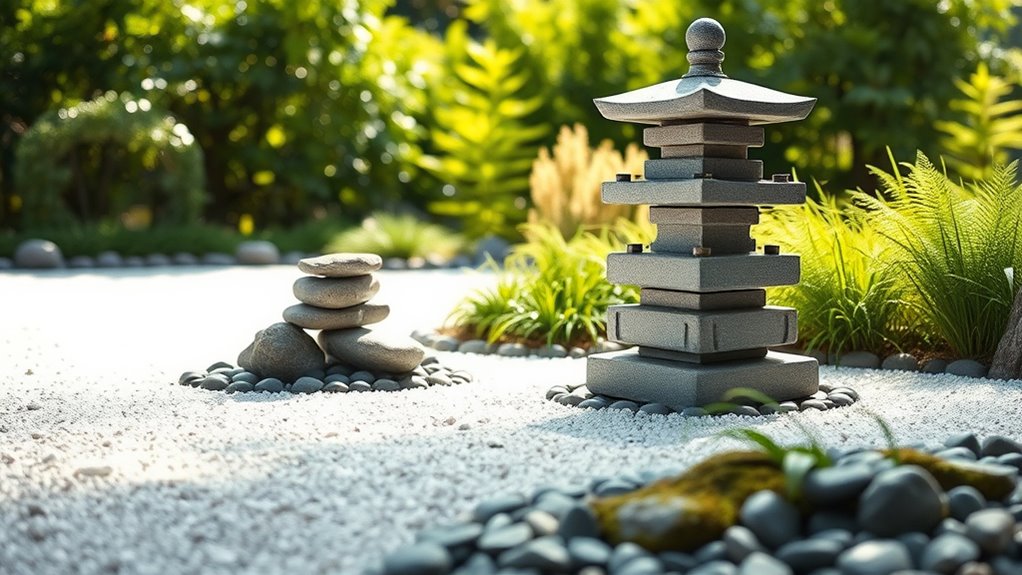
A stone pagoda serves as a stunning focal point in a Japanese Zen garden, embodying tranquility and spiritual symbolism. Typically made of layered stone, these structures represent harmony and balance, drawing the eye and inviting contemplation. Placing a pagoda amid gravel and carefully arranged rocks can enhance the serene atmosphere, while surrounding it with lush greenery or minimalistic plants further emphasizes its importance. The pagoda not only adds visual interest but also encourages mindfulness and connection to nature.
Enhance With Colorful Koi Fish in Ponds
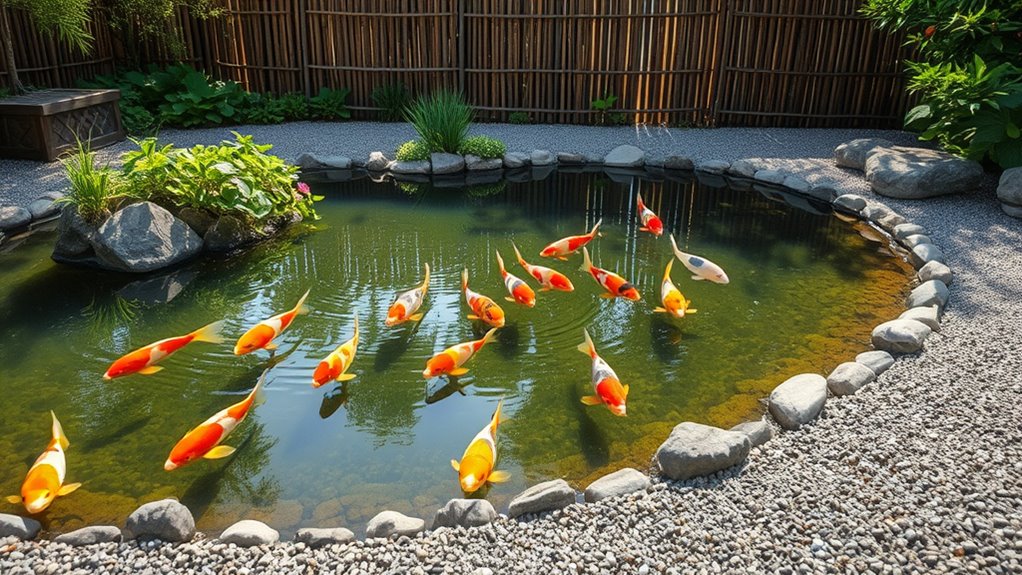
Incorporating colorful koi fish into your Zen garden pond adds a dynamic and serene element to the tranquil landscape. These vibrant fish not only complement the minimalist aesthetic but also symbolize peace, perseverance, and strength in Japanese culture. The gentle movement of koi swimming among aquatic plants creates a mesmerizing focal point, inviting contemplation and relaxation. Enhancing your pond with koi will bring life and color, transforming your garden into a harmonious retreat.
Form Interesting Shapes With Pruned Shrubs
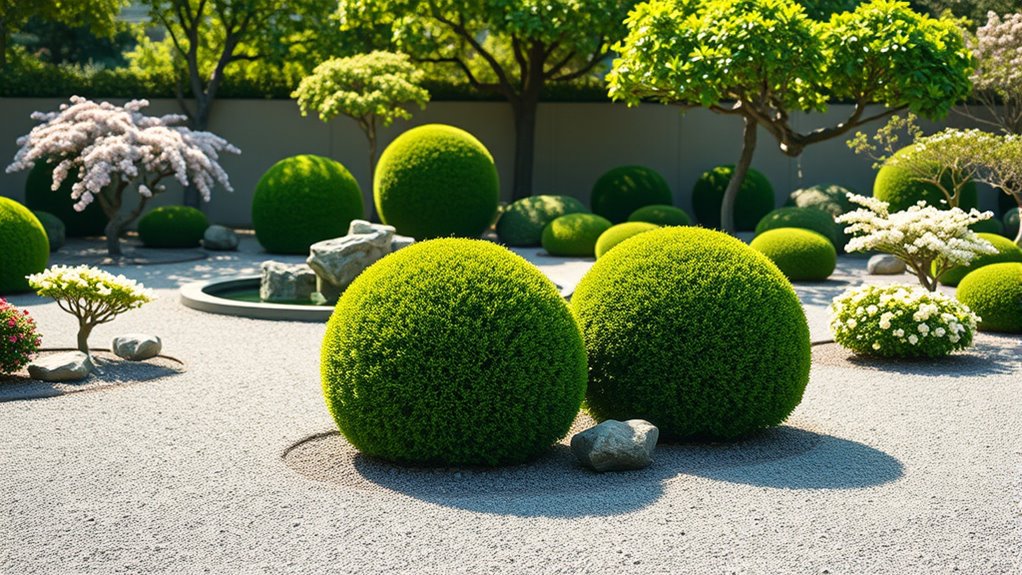
Pruned shrubs can be the focal point of your Zen garden, adding structure and visual interest. By shaping them into geometric forms or flowing curves, you create a sense of harmony and balance. Consider using boxwoods for crisp, clean lines, or flowering shrubs for softer edges. The careful pruning not only emphasizes the design elements but also invites contemplation, aligning with the tranquil essence of Zen philosophy.
Integrate Natural Wood Elements for Warmth
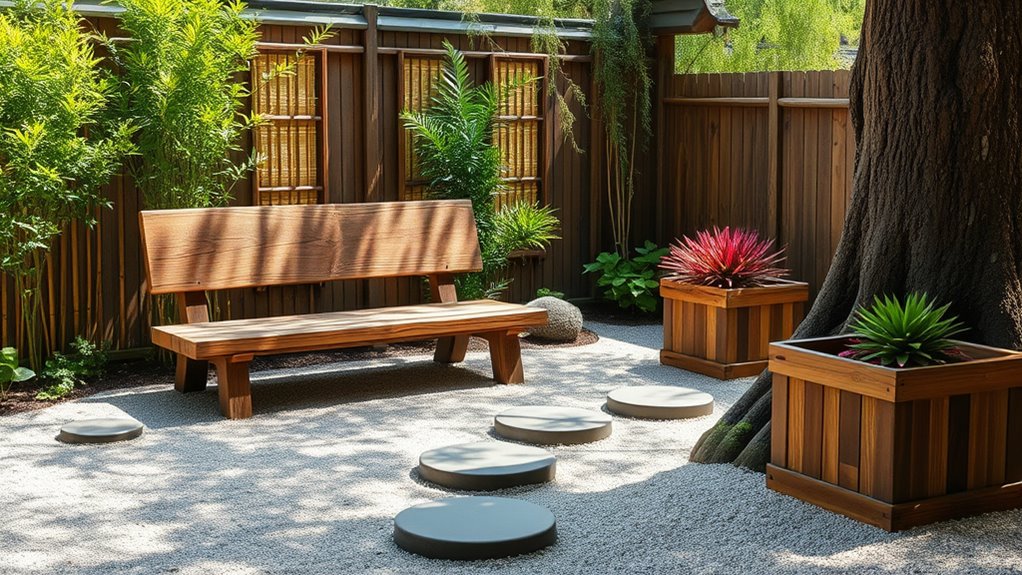
Integrating natural wood elements into your Japanese Zen garden can add warmth and a sense of tranquility. Consider using weathered wooden benches, rustic stepping stones, or bamboo fencing to create a harmonious atmosphere. Wooden planters can also house native plants, while tree trunks can serve as natural focal points. The soft, organic textures of wood contrast beautifully with gravel and stone, enhancing the garden’s peaceful aesthetic while promoting a connection to nature.
Create a Zen Pathway With Stepping Stones
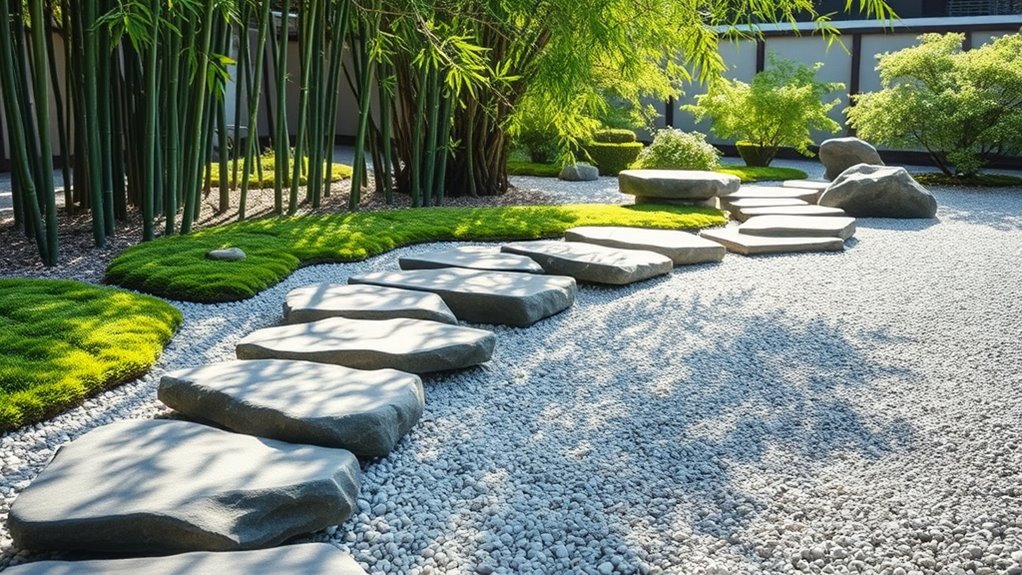
Creating a Zen pathway with stepping stones is a beautiful way to enhance the tranquility of your garden. Choose natural stones that blend with the landscape, placing them strategically to guide visitors through your space. Arrange the stones in a flowing, curved pattern to evoke a sense of serenity as one walks through. Consider adding gravel or soft moss between the stones for an earthy touch, completing the peaceful ambiance that embodies Zen philosophy.
Use Succulents for Low-Maintenance Beauty
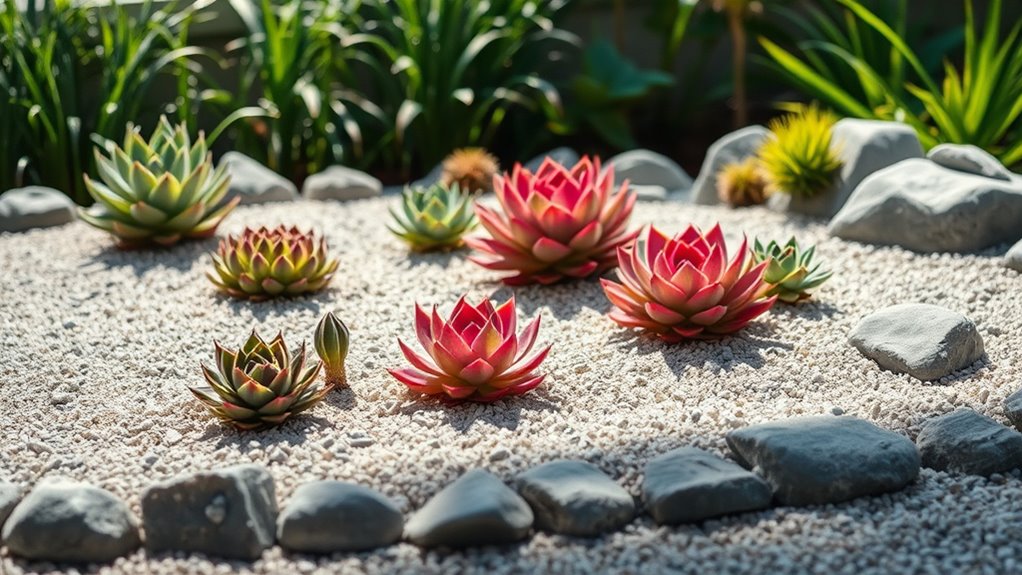
Succulents are ideal for creating a low-maintenance Japanese Zen garden, as their unique shapes and diverse colors add beauty without the burden of extensive care. These hardy plants thrive in dry conditions, requiring minimal watering, making them perfect for a serene outdoor space. Arranging succulents among gravel, sand, and stones allows for artistic expression while maintaining the garden’s tranquil atmosphere. Their resilience symbolizes endurance, aligning with the Zen philosophy of simplicity and harmony in nature.
Invite Wildlife With Native Plants and Flowers
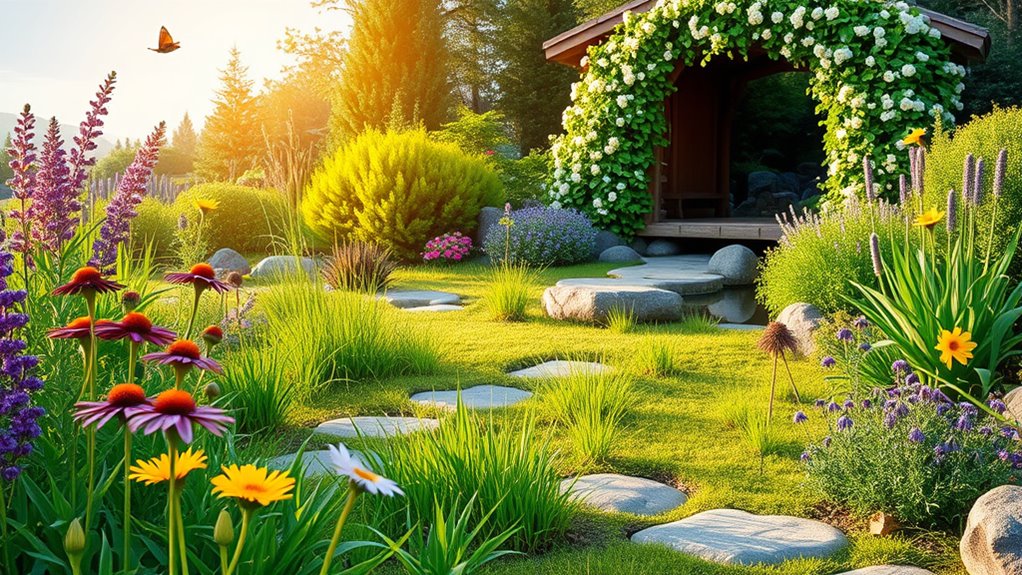
Incorporating native plants and flowers into your Japanese Zen garden not only enhances its aesthetic appeal but also invites local wildlife, creating a harmonious ecosystem. Choose plants that thrive in your region and support local pollinators, such as bees and butterflies. Grasses, shrubs, and flowering plants can provide food and shelter for birds and beneficial insects, enriching the tranquility of your garden. This connection to nature fosters a deeper sense of peace and balance, essential to Zen philosophy.
Conclusion
By blending beauty and balance, your Japanese Zen garden can become a peaceful paradise. Picture gravel paths gently guiding you, while raked sand patterns whisper wisdom. Water features will provide a soothing serenade, and native plants invite delightful diversity. With careful curation of rocks, greenery, and wood, your space transforms into a tranquil retreat. Embrace this elegant essence and let your garden cultivate calmness, inviting you to savor nature’s simple serenity every day.



